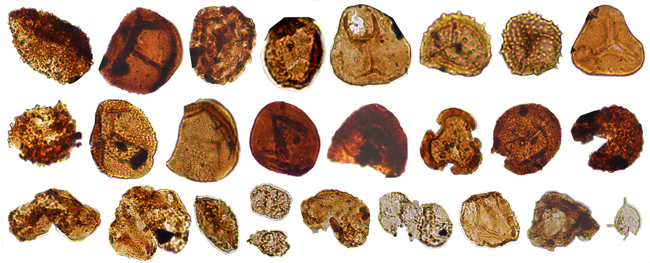The rise of the dinosaurs which led them to dominate terrestrial ecosystems for more than 150 million years was driven by environmental change caused by intense volcanism over 230 million years ago. That is the conclusion in a new study published today in the ” Proceedings of the National Academy of Sciences” (PNAS).
The Late Triassic Carnian Pluvial Episode (CPE) led to a huge rise in global temperature and humidity. This dramatic change had a significant impact on the development of animal and plant life, which was still recovering from the greatest mass extinction event known in the fossil record which had occurred at the end of the Permian, some 20 million years earlier.

The Evolution of Modern Conifers
The researchers, including experts from the University of Birmingham, discovered four distinct pulses of volcanic activity during this time in the Late Triassic. The most likely source of this volcanism being the Wrangellia Large Igneous Province, remnants of which can still be seen in Alaska, British Columbia and the Yukon (western North America).
Jason Hilton (Professor of Palaeobotany and Palaeoenvironments at the University of Birmingham’s School of Geography, Earth and Environmental Sciences), a co-author of the study, explained:
“Within the space of two million years the world’s animal and plant life underwent major changes including selective extinctions in the marine realm and diversification of plant and animal groups on land. These events coincide with a remarkable interval of intense rainfall known as the Carnian Pluvial Episode.”
One of the major groups of plants to benefit from the dramatic climate change were cone-bearing seed plants (conifers). Ferns also benefitted and show an increase in numbers, range and species. Other archosaurs such as crocodyliforms show an increase in diversity and mammaliaforms, insects and turtles seem to have thrived as a result of this climate change.
Rising Carbon Dioxide Levels Driving Climate Change
Professor Hilton added:
“Our research shows, in a detailed record from a lake in North China, that this period can actually be resolved into four distinct events, each one driven by discrete pulses of powerful volcanic activity associated with enormous releases of carbon dioxide into the atmosphere. These triggered an increase in global temperature and humidity.”
The scientists discovered that each phase of volcanic activity coincided with widescale disruption to the global carbon cycle. The higher levels of carbon dioxide produced led to major climate changes with a hotter, wetter climates predominating. The ancient lake deposits reveal that it became deeper but oxygen levels in the lake reduced and stifled animal life.
Geological events from a similar timeframe in Europe, Argentina, eastern Greenland, Morocco and North America, among other locations indicate that increased rainfall resulted in widespread expansion of drainage basins converging into lakes or swamps, rather than rivers or oceans.
Co-author of the paper, Dr Sarah Greene (Senior Lecturer in the School of Geography, Earth and Environmental Sciences, University of Birmingham) added:
“Our results show that large volcanic eruptions can occur in multiple, discrete pulses demonstrating their powerful ability to alter the global carbon cycle, cause climate and hydrological disruption and drive evolutionary processes.”

The research team investigated terrestrial sediments from the ZJ-1 borehole in the Jiyuan Basin of North China. They used uranium-lead zircon dating, high-resolution chemostratigraphy, palynological and sedimentological data to correlate terrestrial conditions in the region with synchronous large-scale volcanic activity in North America.
Everything Dinosaur acknowledges the assistance of a media release from the University of Birmingham in the compilation of this article.
The scientific paper: “Volcanically-driven lacustrine ecosystem changes during the Carnian Pluvial Episode (Late Triassic)” by Jing Lu, Peixin Zhang, Jacopo Dal Corso, Minfang Yang, Paul B. Wignall, Sarah E. Greene, Longyi Shao, Dan Lyu and Jason Hilton published in Proceedings of the National Academy of Sciences (PNAS).
Visit the Everything Dinosaur website: Everything Dinosaur.






Leave A Comment